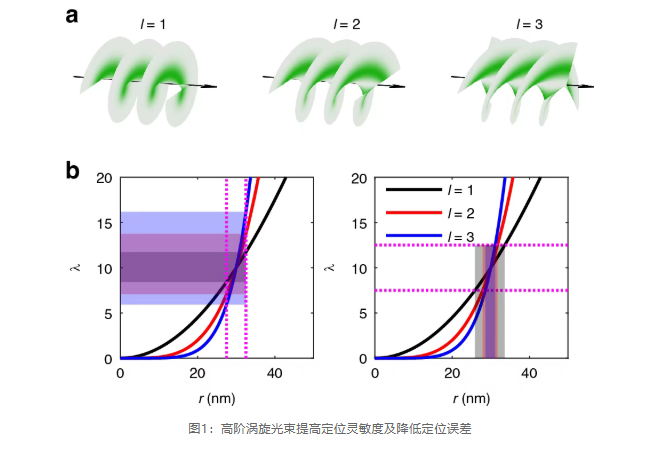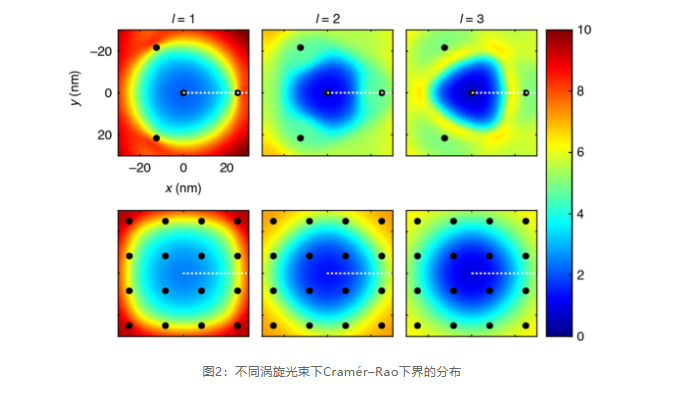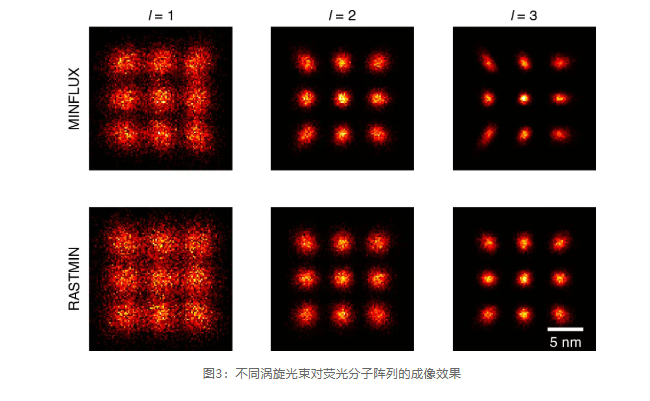Chongfan Technology
News
20
2025
-
08
High-order vortex beams assist super-resolution imaging
Author:
Recently, Professor Huang Zhiwei from the Department of Biomedical Engineering at the National University of Singapore leads a biophotonics team. In a recent study, it was proposed that introducing higher-order vortex beams into the minimal light flux (MINFLUX) imaging technology can significantly enhance the measurement accuracy of the imaging system, thereby further breaking through the resolution limits of traditional optical imaging.
In recent years, super-resolution imaging has made significant progress in the field of biomedical research, with the most groundbreaking advancement being the MINFLUX imaging technology. This technology combines stimulated emission depletion and single-molecule localization principles, using hollow-core beams for excitation, allowing for precise localization of fluorescent molecules under limited illumination flux. Since its introduction in 2017, MINFLUX has attracted attention for its superior performance with sub-nanometer resolution and has been widely applied in various biomedical observations.
A typical MINFLUX system usually constructs a ring-shaped excitation spot using first-order vortex beams, and its resolution is limited by the characteristics of the near-second intensity distribution in the central region of the optical field. To further enhance the resolution of MINFLUX, it is necessary to more precisely control the system's transfer function.
This study is the first to introduce higher-order vortex beams into the MINFLUX imaging system and systematically analyze their enhancement effects on MINFLUX imaging performance. Compared to first-order vortex beams, higher-order vortex beams possess multiple helical phases and carry higher-order orbital angular momentum, with the light field intensity near their singularities exhibiting a higher-order nonlinear distribution ( Figure 1a ). Therefore, they can be used to generate point spread functions with higher-order nonlinear characteristics. Research shows that such higher-order nonlinear point spread functions can significantly enhance the sensitivity of single-molecule localization and effectively reduce the uncertainty of single-molecule localization under the same photon number and noise level ( Figure 1b ).

The variance of unbiased parameter estimation is limited by the Cramér–Rao lower bound. Analysis of this bound shows that using higher-order vortex beams can significantly reduce the error lower bound of MINFLUX ( Figure 2 ). Specifically, in the conventional four-point targeted MINFLUX mode, as the vortex order increases, the localization error in the central region decreases inversely, greatly improving the accuracy of iterative localization. In the raster scanning mode (RASTMIN), applying higher-order vortex beams not only maintains a low localization error but also broadens the imaging field, making large-area high-precision imaging possible. Additionally, higher-order vortex beams exhibit more stable propagation characteristics in scattering or disturbed media, making them more favorable for imaging deep biological tissues.

As validation, the research team simulated and demonstrated the localization process of fluorescent molecules under different vortex beam conditions ( Figure 3 ). The results show that higher-order vortex beams have a clear advantage in enhancing the resolution capability of the light source, significantly reducing localization errors compared to lower-order vortex beams, and are effectively constrained by the Cramér–Rao lower bound. The research team also discussed in detail the impact of various factors on MINFLUX imaging performance, providing reliable evidence for optimizing this technology's performance in different application scenarios.

This study demonstrates the enhancement effect of higher-order vortex beams on MINFLUX imaging performance, expands the application range of vortex beams, and provides new ideas for the further development of super-resolution imaging technology.
LATEST NEWS
2025-12-17
Beijing Institute of Technology Review: Infrared Detectors for In-Memory Sensing and Computing
2025-12-17
High-performance III-V family infrared detectors
Since the advent of infrared detectors in the 1940s, their technological framework has undergone leapfrog development, with significant expansions in both device types and performance.
Thank you for visiting the official website of Chongfan Technology. If you have cooperation intentions or suggestions, please contact us through the following methods, and we will reply as soon as possible, thank you!
Address: Room 403, Building 6, Phase III of R&D, No. 36 Xiyong Avenue, High tech Zone, Chongqing, China.
Telephone: +86-13658337211
E-mail: Sales@cfkeji.net
Website: www.cfkeji.net
Mobile Version

